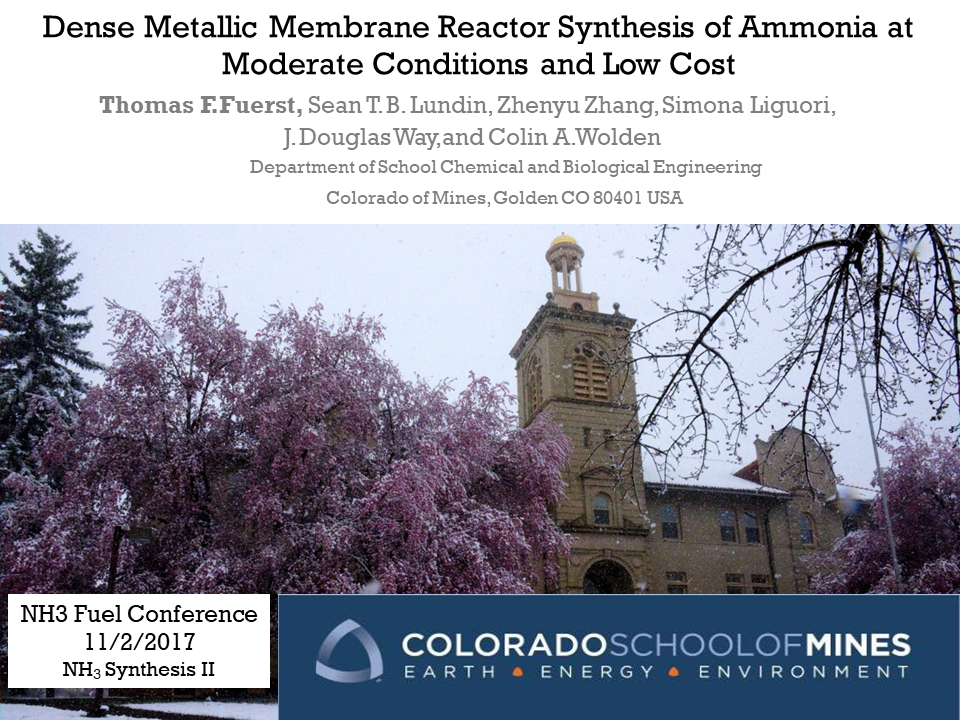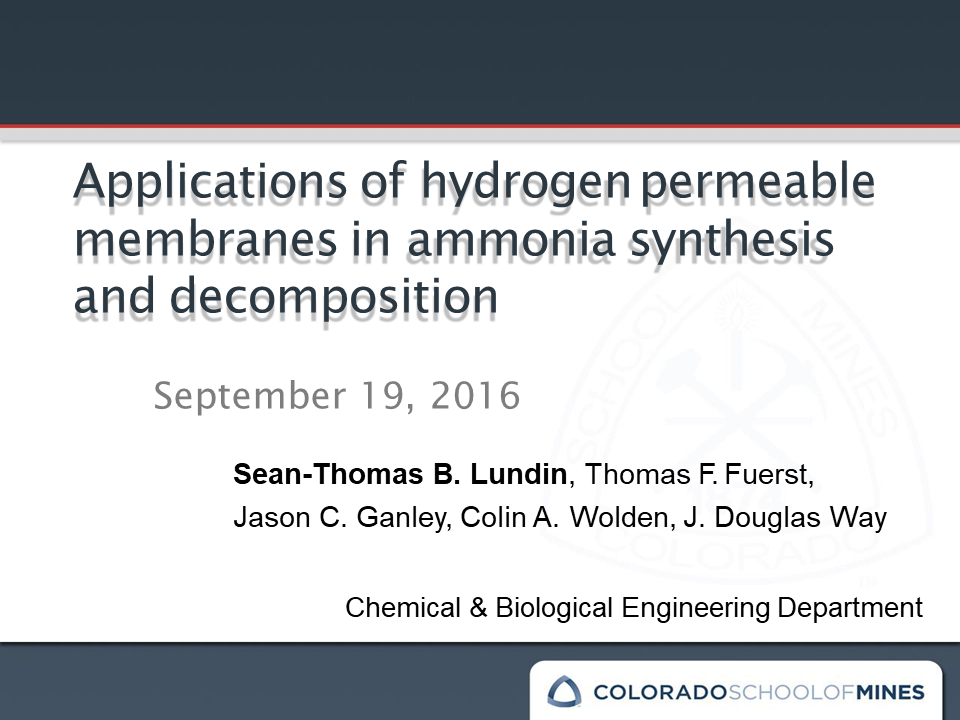Presentation
Dense Metallic Membrane Reactor Synthesis of Ammonia at Moderate Conditions and Low Cost
Commercial ammonia synthesis relies on the Haber–Bosch process that has remained largely unchanged for a hundred years. The equilibrium constant of this exothermic reaction quickly becomes unfavorable above 200 °C, but the catalyst requires temperatures above 400 °C to have sufficient activity. To overcome these conflicting requirements the process is conducted at extremely high pressure (100 – 200 atm) using multiple passes with inter-stage cooling to achieve sufficient conversion. A cost analysis reveals the compressors needed to reach the required pressures consist of 50% the capital cost for Haber-Bosch. Therefore, a longstanding scientific challenge has been to achieve NH3 synthesis…

